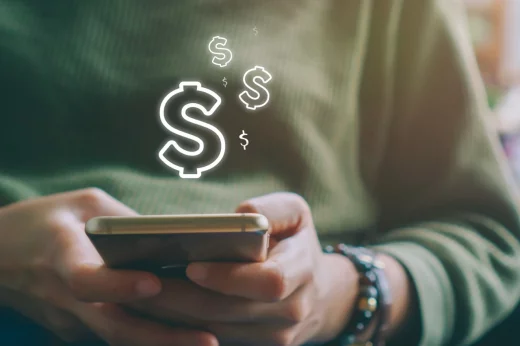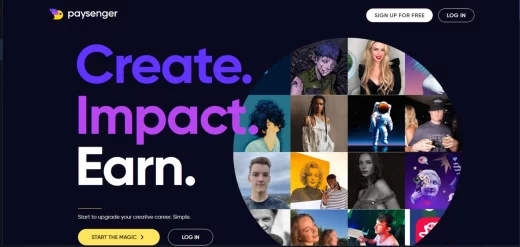
Introduction to the world of influencers
The world of influencers has transformed from a “niche type of thing” to a billion dollar booming industry with a B! Social media platforms have given everyone the ability to simply turn on the camera and enrich everyone on the planet with their voice, creativity, and expertise. However, can anyone become a successful influencer? You might not like the answer but it won’t come as a shock either.
Conventional social platforms are designed in a way that benefits one party the most of all – the company that owns the platform. While there is a plethora of tools available today to kickstart your journey, you might only end up getting overwhelmed or “pushed down” by the algorithm.
With that being said, let’s explore some of the various ways influencers make their money and how you can also scale your presence without getting trapped under the noise. We will discuss the importance of finding your niche, setting realistic expectations, and understanding the algorithm (and why it makes it difficult for the small-to-medium size influencer to grow).
Let’s get started!
Understanding the influencer business model
The influencer market has shown exponential growth over the past few years. The market that was valued at $7.36 billion in 2021 is expected to hit $69.92 billion by 2029, according to a Data Bridge Market research. However, that also means that the competition continues to grow and will only become fierce over the years. Before we talk about strategy, let’s start with a little bit about the influencer business model.
Who’s an influencer?

An influencer is someone who has a substantial following on social media platforms, such as Instagram, YouTube, TikTok, etc. But most importantly, influencers have the ability to influence the purchasing decisions and opinions of their followers. Having a lot of followers doesn’t automatically make you an influencer.
It’s more about how engaged and loyal your audience is to you. If you’re able to have that strong of an opinion in the market, you become a valuable partner for brands who might be looking to target your specific audience to sell their products. Influencers get paid by these companies to promote their products. In exchange for timely payments, influencers create sponsored content for brands and say good words about them on their socials, essentially promoting them in front of their audiences.
The key to making money as an influencer is to have a highly-engaged audience that respects your personal brand and your opinion. Your expertise is worth everything! Once you have a solid reputation, you can easily turn everything you post online into a profitable, highly-rewarding business.
Is it all about content?
Managing your influencer business involves more than just creating content and engaging with your audience. It's essential to develop strong organizational skills, track your income and expenses, and stay informed about industry trends and best practices. Social media for influencers is becoming increasingly competitive. Small-to-medium sized influencers these days need much more effort to get their content out in the open than a decade ago. Algorithms generally favor big-name content creators, and unless you have a big budget, branding yourself can take a long time.
Remember that most of the top influencers today became big because they started early when the platforms had less competition. According to research, a content creator starting today will need over twice the amount of effort to reach that level and luck plays an important role. This is why you should consider investing in monetization tools and resources, such as social media management platforms, analytics software, and educational materials, to streamline your workflow and stay ahead of the curve. Another great way is to join a new growing platform to get ahead of others such as Paysenger.
How do influencers make money: top 10 strategies

a. Sponsored content and brand partnerships
This is one of the primary ways influencers make money. Sponsors reach out to influencers using email or DMs on social platforms (such as Instagram) with a sponsored proposal. The proposal includes details of what kind of content brands expect influencers to produce. Influencers quote a price – according to research, the average earnings of a nano-to-micro influencer is $150-$1300 per post on Instagram.
Influencers that have a highly niche-specific audience generally make more than generic entertainment-type pages. Niche-specific influencers, even if they have a small following (from 5,000 to 10,000 followers), may end up charging hefty sums for a post because of their strong opinion in the industry.
Influencers exist on all platforms – some shoot videos on YouTube, some create photography, some write blogs, some host a podcast and so on. The most important factor is that these influencers have something unique to share and their audiences value their content and opinion.
b. Affiliate marketing
Affiliate marketing is super popular but probably one of the difficult strategies of earning as an influencer. Influencers promote or display products and use affiliate links to earn a commission on every sale made through their referral. This is generally ideal for creating passive income because this requires the least amount of time and effort (as compared to other monetization models). You simply leave affiliate links on your content and people get introduced to all of the services, tools or products you use in your videos.
Affiliate conversion rates are generally much lower as compared to sponsored posts, which is why most affiliates make less than $5,000 a month. There are, however, some big names that do over $100,000 a month primarily through affiliate marketing. However, most of them started a long time ago. By the way, we did a detailed comparison between affiliate programs and other monetization models that you can use to create a sustainable business as an influencer called Maximizing Your Contents Worth: The Ultimate Guide to Content Monetization in 2023.
Be sure to check it out!
c. Merchandise sales
This one is quite popular. Influencers create their own “merch” such as clothing, accessories, or digital products with their unique style and logo. You can easily sell merch as an influencer using various platforms such as Shopify or even Ko-fi which offers features to create a merch store.
You can check out other subscription and merch sale platforms for influencers in our article Exploring the Best Subscription Platforms for Online Content Creators. Merch sales not only provide additional income streams but also help you strengthen your personal brand and create a deeper connection with your audiences.
d. Paid collaborations and guest appearances
Influencers collaborate with other influencers or companies to create content together. They also do guest appearances for money. This can involve partnering with other influencers on joint content or being featured as a guest on podcasts, YouTube channels, or other media outlets.
You can easily do this on platforms like Paysenger – which allows seamless collaboration with other influencers where you can also have joint ownership of whatever content you produce together. These opportunities not only provide additional income but also give access to influencer's to a bigger audience and reach.
e. Subscription-based content
Some influencers offer exclusive, premium content to their audience through subscription-based platforms such as Patreon or OnlyFans. This allows influencers to monetize their content directly, providing a more stable and predictable income stream.
f. Social media advertising revenue
Influencers with a significant following on platforms like YouTube or TikTok can generate income through advertising revenue. These platforms typically have built-in monetization features that enable influencers to earn money from the ads displayed alongside their content.
g. Online courses and workshops
If you have a small but highly engaged audience, you can package your expertise into an online course, workshops, or coaching webinars. Platforms like Udemy and Coursera offer excellent tools to get started. This works a lot better if you already have a reputation and are a known expert in a particular niche. Demonstrate your expertise using free content to build an audience. And when everyone knows of your skill, turn it into a course and distribute it through platforms.
h. Product endorsements
This is highly popular among models, athletes and fitness experts. Fashion brands, fitness companies and others ask influencers to give “shoutouts” on Snapchat, Instagram and TikTok while using their products. This could range from tutorial videos to simply a testimonial of how the product looks like and how well it functions.
i. Public speaking and events
Big influencers are paid hefty sums to speak at events, conferences, or workshops. This is especially popular among business coaches and motivational speakers. Public speaking can easily become your primary source of income. However, it can be taxing because each event takes time and effort. If you’re planning to become a public speaker, try to incorporate some other revenue streams so you can keep up your income without exhausting yourself.
How much money does an influencer make on Instagram?

Marketers are pouring the biggest share of influencer marketing dollars into Instagram as compared to any other platform, according to eMarketer. Instagram is great for niche influencers as it allows you to cultivate an audience that has very specific needs and tastes. In addition, marketers can easily look you up and reach out to you for sponsorship opportunities to produce content or promote products in line with your content and your values.
According to Statista, nano-influencers can make up to $195 per post, a mid-size influencer $1,221 and a macro influencer up to $1,804 on Instagram. Additionally, in 2021, the average price per sponsored post demanded by macro influencers on Instagram ranged from $165 to $1,804.
Another way to earn on Instagram is through the Reels Bonus program which compensates you for video views. The amount of money you get paid varies from creator to creator and Instagram personalizes the payout per view for each creator. This makes it hard to predict how much you can earn.
Also, it's an invite-only feature, and it pays a bonus to creators who reach a minimum of 1,000 views over a 30-day period. Meta says that you can earn up to $35,000 a month.
How much do influencers make on TikTok?
TikTok currently doesn't allow creators to earn by running ads on their videos like YouTube. However, influencers can still get paid for merch sales, sponsorship deals and product endorsements.
Interestingly, nano and micro influencers on TikTok sometimes end up accumulating higher earnings overall than macro influencers because brands tend to favor small influencers with low prices and higher engagement. With that said, this is how much influencers make on TikTok:
- Nano-influencers (<10,000 followers) make $5-$10 per post
- Micro-influencers (10,000-100,000 followers) make $60-$90 per post
- Mid-tier influencers (100k-500k followers) make $200-$400 per post
- Macro-influencers (500k-1M followers) make $400-$600 per post
- "TikTok royalties" (over 1M) make $750 to $1,000 or more per post
TikTok's Creator Fund program, similar to Instagram's Reel Bonus program, also makes payouts to invite-only creators who have reached 100,000 followers in 30 days. According to Forbes, the general payout is 4 cents for every 1000 views on your videos.
So, to earn $400 you'll need 10 million views through the program. Due to the low and unpredictable payouts, most creators prefer to make the bulk of their earnings through sponsorship deals with brands.
How much do influencers make on Paysenger?

Paysenger is a relatively new platform in the list. Sponsorship deals, influencer collaboration and merch sales are the most popular (and high-paying) ways of earning money as an influencer. That's why Paysenger capitalizes on these methods and offers influencers built-in features to sell sponsored posts, on-demand content (similar to Cameo), subscriptions (like Patreon) and more.
Since the platform allows you to set pricing on your profile for various types of offers to your followers and brands, you can earn:
- Anything between $5-$1,000 per sponsored post depending on your following and influence
- A minimum of $1 from every paid direct message you receive from fans, brands and marketers
- NFT royalties from every post you create (everything you post on Paysenger gets turned into an NFT and can be traded on marketplaces, paying you royalties for every subsequent resale)
- Between $5-$1,000 for an on-demand content request (users can ask you to produce a video for them for a fee)
Try Paysenger here.
Getting paid as a social media influencer
Branding yourself as an influencer is the right way to go if you're looking to earn on social media. However, there are a lot of moving parts to deal with when it comes to turning it into a predictable revenue stream. Getting hired on current platforms such as TikTok, Instagram and YouTube is becoming increasingly difficult. That's because there's an entire sea of creators out there posting new content daily, and your offering can easily get lost in the noise.
Creators who started early (when the platforms were young) did a lot better and were able to get their well-deserved exposure without having to deal with unfair algorithms and intense competition. To turn online content creation into a source of stable income, optimize your videos to have as many calls-to-actions possible.
- Give a way for audiences to support you and offer exclusive content in return by using Patreon or Ko-Fi
- Use creative CTAs at the end of videos that compel viewers to subscribe
- Don't just keep audiences on one platform! Send them to follow you on Instagram, for example, if you're producing content on YouTube. This opens up more ways to monetize.
The biggest disadvantage of marketing yourself like that
A lot of users might ignore your CTAs because they see a lot of their favorite creators making similar types of requests. When a certain type of advertisement keeps showing up repeatedly, we tend to develop "blindness" towards them. These days, almost every creator on the internet is asking to "subscribe to their Patreon", buy their merch and so on.
On Paysenger, on the other hand, you can automatically optimize your content to collect followers and increase your earnings. Our platform uses daily tasks and other features to encourage audiences to engage with your content and make payments. It also has CTAs built into the platform, so you don't need to "ask" for support.
In addition, it doesn't require you to send audiences to other platforms as it offers all monetization tools in one place including:
- Paid on-demand video requests (like Cameo)
- Subscriptions and exclusive content (like Patreon)
- Social media features like posting and sharing content to a worldwide audience (Instagram)
- Short videos and sponsored ad placements (YouTube, TikTok)
- Contests, hashtag challenges, crowdfunding campaigns and more
Legal considerations when making money as an influencer
When making money as an influencer, it's essential to be aware of the legal considerations involved. This includes complying with advertising and disclosure regulations, such as the Federal Trade Commission (FTC) guidelines in the United States.
Most importantly, you are required by law (in some jurisdictions) to let audiences know about sponsored content or affiliate partnerships. While it is perfectly normal for content creators to “seamlessly” transition between their usual content and promotions, prioritize the trust and integrity of your personal brand by always being transparent.
Conclusion: achieving success as a money-making influencer

In conclusion, making money as an influencer is an attainable goal with the right tools and modern technologies. A lot of influencers managed to become successful and have based their livelihood on existing platforms. However, it’s becoming more and more difficult to scale on these platforms.
Try new platforms such as Paysenger to benefit from its growing audiences and lower barrier of entry. The platform currently has very little competition so you can easily get your content out to audiences all over the world.
Focus on playing the long-term game – build a strong personal brand, grow your audience, and never put your eggs in one basket (use multiple income streams). With time and the right tools, you can easily turn your passion into a stable source of income.
Make your journey to become a creator influencer easier on Paysenger. Reach new audiences, collect payments, collaborate with other creators, find your niche and establish yourself as a successful influencer/entrepreneur on the world wide web. Download and try it for free today.
